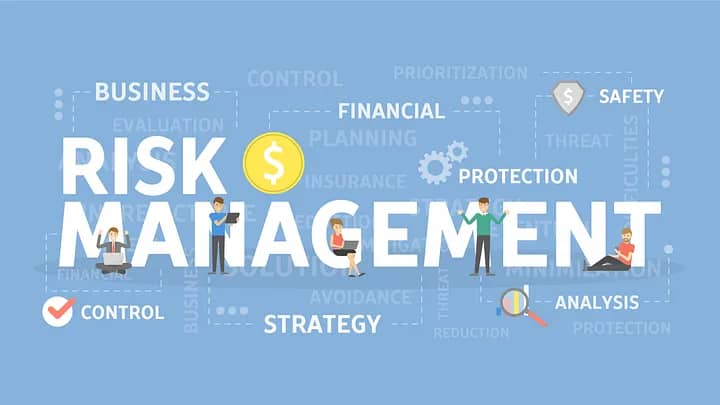The Hidden Risks: Are You Overlooking These Potential Threats?
Risks are often inevitable in businesses and threats to success, most times come from the unlikeliest places. While entrepreneurs and executives focus on overt challenges like market competition and supply chain disruptions, hidden risks can quietly erode a business’s foundation. Are you overlooking these potential threats? Let’s delve deep into the hidden perils that could impact your business and explore strategies to mitigate them.
What Are Hidden Risks?
Hidden risks are potential threats lurking beneath the surface, which may not be immediately obvious. They can range from cybersecurity vulnerabilities to employee dissatisfaction, and their impact can accumulate over time, leading to business failure.
Types of Hidden Risks
- Cybersecurity Threats
- Data breaches and hacking incidents are not just large-scale news stories; they can occur in small businesses too.
- According to a report by Cybersecurity Ventures, cybercrime is predicted to cost the world $10.5 trillion annually by 2025.
- Reputational Damage:
- A company’s reputation can be damaged by customer complaints, negative online reviews, or even social media backlash.
- 70% of consumers say they would not buy from a brand after hearing negative feedback from friends or online sources.
- Employee Morale:
- Disengaged employees can significantly reduce productivity.
- Gallup’s State of the Workplace report found that organizations with highly engaged employees outperform those without by 202%.
- Regulatory and Compliance:
- Keeping up with constantly changing laws can be overwhelming.
- Businesses in non-compliance can face fines, lawsuits, and loss of reputation.
- Economic Volatility:
- Factors such as inflation, currency fluctuations, and changes in interest rates can severely impact profitability.
- According to the World Bank, global economic growth is expected to slow down to 2.9% in 2023, affecting all businesses.
Why You Should Care About Hidden Risks
Hidden risks might seem negligible at first glance, but they can have devastating effects over time. Neglecting them is a recipe for disaster.
“The greatest danger in times of turbulence is not the turbulence; it is to act with yesterday’s logic.” – Peter Drucker.
The Domino Effect of Overlooking Hidden Risks
When one risk is ignored, it often triggers a chain reaction. For example:
- A ‘data breach’ can lead to ‘reputational damage’, which can then result in ‘loss of customers’ and, ultimately, reduced revenues.
- Poor ’employee morale’ can lead to high turnover rates, impacting ‘team efficiency’ and
‘profitability’.
Strategies For Identifying Risks
- Regular Risk Assessments:
- Conduct routine audits to identify vulnerabilities. Analyze internal and external factors.
- Engage with risk management professionals who can provide a fresh perspective.
- Empower Employees:
- Foster a company culture where employees feel secure to voice concerns.
- Regular feedback sessions can uncover hidden moral issues.
- Establish a Crisis Management Team:
- Form a dedicated team that can act swiftly in times of trouble.
- They can develop contingency plans that address identified risks.
- Invest in Technology:
- Cybersecurity technology can track potential threats before they escalate.
- Implementing software for regulatory compliance can help manage changing laws.
- Educate Your Workforce:
- Training staff on the importance of cybersecurity can help secure sensitive data.
- Encourage awareness of reputation management and the potential repercussions of social media behavior.
How To Monitor and Mitigate Risks
Monitoring hidden risks is essential to keeping them under control. Here are actionable steps:
- Install monitoring tools to oversee data security.
- Create a feedback loop where employees can communicate concerns.
- Engage third-party consultants for objective evaluation and advice.
Critical Changes in Business Operations
In a world shaped by uncertainty, adaptability is key. Key changes to consider for risk mitigation include:
- Adopting Remote Work: A flexible work model can help ensure your business continues running during disruptions.
- Diversifying Suppliers: Relying on a single supplier can create vulnerabilities. Consider branching out to stabilize your supply chain.
- Utilizing Cloud Technologies: These technologies can provide data protection, improve collaboration, and decrease operational costs.
The Importance of a Robust Business Continuity Plan
A comprehensive business continuity plan (BCP) is essential for dealing with hidden risks.
- Identify critical functions and assess how disruptions could impact them.
- Develop strategies for maintaining operations despite challenges.
- Regularly test and update the plan based on new threats.
Statistical Insight: According to FEMA, 40% of small businesses never reopen after a disaster, highlighting the importance of preparedness.
Financial Implications of Ignoring Hidden Risks
The costs of overlooking hidden risks extend beyond just financial losses. Some financial implications include:
- Lost revenue from damaged customer relationships.
- Legal expenses arising from non-compliance.
- Increased insurance premiums for businesses known for their risks.
FAQs
How can we better train employees to recognize risks?
Regular workshops and training sessions on risk management can empower employees to identify potential threats.
What are the benefits of a risk assessment?
Conducting a risk assessment allows businesses to identify vulnerabilities, save costs, and safeguard their reputation.
How can we ensure compliance with regulations?
Implementing compliance management software can help you stay updated with changing laws and regulatory requirements.
What trends should we watch for in hidden risks?
Be attentive to shifts in work culture, technology advancements, and changing customer expectations.
Understanding the hidden risks within your business is not merely an option; it’s a necessity. With proper strategies and a vigilant mindset, you can identify these threats before they escalate. The proactive identification and management of hidden risks can make the difference between thriving and merely surviving in today’s crowded marketplace.
Is your business prepared? Assess your risks today and secure a more prepared, resilient future.









when is generic cialis available buy liquid cialis online or does tadalafil work
https://hc-vsetin.cz/media_show.asp?type=1&id=246&url_back=http://tadalaccess.com peptide tadalafil reddit
cialis online pharmacy cialis directions and cialis 5mg price walmart cialis trial
cialis soft cialis com coupons or generic cialis online pharmacy
http://radio.sodazaa.com/outlink.php?url=https://tadalaccess.com cialis available in walgreens over counter??
paypal cialis payment us pharmacy prices for cialis and what possible side effect should a patient taking tadalafil report to a physician quizlet cialis shelf life
https://tadalaccess.com/# cialis price walmart
stendra vs cialis: TadalAccess – cialis price walgreens
tadalafil tablets Tadal Access does cialis lowers blood pressure
whats cialis cialis and blood pressure or tadalafil tablets 20 mg side effects
http://www.yabuno.net/w3a/redirect.php?redirect=http://tadalaccess.com original cialis online
cialis substitute cialis meme and tadalafil tablets 20 mg reviews where to buy generic cialis
https://tadalaccess.com/# cialis experience forum
brand cialis with prescription: is cialis covered by insurance – buy cialis online in austalia
does medicare cover cialis TadalAccess purchasing cialis
ordering cialis online cialis free sample or cialis directions
https://shizenshop.com/shop/display_cart?return_url=https://tadalaccess.com/ cialis lower blood pressure
best price on cialis 20mg prescription free cialis and cialis dosage 40 mg cialis tablet
cialis 5mg daily how long before it works: TadalAccess – cialis sell
https://tadalaccess.com/# cialis no prescription
cialis before and after how many 5mg cialis can i take at once cialis information
cialis results buy cialis online safely or cialis for sale over the counter
https://www.google.cg/url?q=https://tadalaccess.com cialis professional ingredients
generic cialis 20 mg from india can tadalafil cure erectile dysfunction and what cialis what is cialis pill
cialis company: TadalAccess – cialis active ingredient
https://tadalaccess.com/# generic tadalafil cost
tadalafil citrate bodybuilding generic tadalafil 40 mg cialis price south africa
buy tadalafil online canada: TadalAccess – cialis savings card
price of cialis cialis price cvs or tadalafil vs cialis
https://www.google.co.th/url?q=https://tadalaccess.com price of cialis at walmart
can you purchase tadalafil in the us cheap cialis with dapoxetine and cialis dose purchase cialis on line
cialis professional vs cialis super active Tadal Access cialis for bph
cialis free samples: cialis 20 mg best price – cialis super active real online store
cialis instructions mail order cialis or shop for cialis
https://perfectlychilledhotels.com/redirect/?site=Splendia+-+Our+hotel+reservation+partner&url=https://tadalaccess.com canadian online pharmacy no prescription cialis dapoxetine
tadalafil cheapest online cialis dosage reddit and viagara cialis levitra free cialis samples
https://tadalaccess.com/# buy cialis pro
best place to buy generic cialis online cialis generic versus brand name or cialis dopoxetine
https://www.google.sc/url?q=https://tadalaccess.com cialis online canada
cialis from mexico when will generic tadalafil be available and where to buy tadalafil in singapore cialis from mexico
cialis black 800 mg pill house cialis vs flomax for bph cialis no perscrtion
buy cialis on line: Tadal Access – cialis 20 mg best price
cialis super active buy generic cialiss or generic tadalafil 40 mg
http://ewin.biz/jsonp/?url=https://tadalaccess.com:: cialis 10mg reviews
buy cialis canada paypal how long does it take for cialis to take effect and can tadalafil cure erectile dysfunction liquid tadalafil research chemical
https://tadalaccess.com/# what is cialis tadalafil used for
benefits of tadalafil over sidenafil: TadalAccess – reliable source cialis
cialis how long does it last TadalAccess cialis online without prescription
tadalafil (tadalis-ajanta) reviews order generic cialis online or what does cialis look like
https://www.google.jo/url?q=https://tadalaccess.com cialis and nitrates
buy cialis online overnight shipping cialis 20 milligram and cialis prostate cialis 20 mg how long does it take to work
https://tadalaccess.com/# take cialis the correct way
buy cipla tadalafil does cialis lower your blood pressure or buy cialis no prescription
https://images.google.com.jm/url?sa=t&url=https://tadalaccess.com where to buy tadalafil online
cialis online canada ripoff cialis over the counter in spain and cheap cialis for sale cialis male enhancement
cialis for sale online: cialis max dose – what is cialis for
where to buy tadalafil online Tadal Access how to buy tadalafil
get antibiotics without seeing a doctor buy antibiotics online uk buy antibiotics
buy antibiotics from india: get antibiotics without seeing a doctor – Over the counter antibiotics for infection
cheapest antibiotics: buy antibiotics online uk – best online doctor for antibiotics
Online medication store Australia: pharmacy online australia – Online medication store Australia
https://biotpharm.com/# buy antibiotics
get antibiotics without seeing a doctor buy antibiotics online uk antibiotic without presription
pharmacy online australia: Pharm Au 24 – Online drugstore Australia
pharmacy online australia: PharmAu24 – Licensed online pharmacy AU
Ero Pharm Fast: Ero Pharm Fast – where to get ed pills
Buy medicine online Australia: Online drugstore Australia – Buy medicine online Australia
online erectile dysfunction pills best online ed treatment Ero Pharm Fast
https://biotpharm.shop/# antibiotic without presription
Ero Pharm Fast: cost of ed meds – Ero Pharm Fast
https://biotpharm.shop/# best online doctor for antibiotics
Pharm Au 24: online pharmacy australia – Online drugstore Australia
buy erectile dysfunction treatment online ed drugs or ed prescriptions online
http://www.ixawiki.com/link.php?url=https://eropharmfast.com ed treatments online
where to get ed pills best ed meds online and order ed pills erectile dysfunction medications online
Pharm Au 24: Pharm Au24 – Pharm Au24
low cost ed pills: Ero Pharm Fast – Ero Pharm Fast
buy antibiotics over the counter buy antibiotics for uti or buy antibiotics for uti
https://cse.google.az/url?sa=t&url=https://biotpharm.com antibiotic without presription
get antibiotics without seeing a doctor Over the counter antibiotics pills and over the counter antibiotics best online doctor for antibiotics
https://biotpharm.com/# Over the counter antibiotics pills
buy antibiotics online buy antibiotics over the counter buy antibiotics from india
buy antibiotics online: buy antibiotics online uk – buy antibiotics from india
online ed medicine: Ero Pharm Fast – Ero Pharm Fast
Discount pharmacy Australia PharmAu24 or Discount pharmacy Australia
https://www.adventurework.co.uk/extern.aspx?cu=93154&page=1&s=42&t=1&src=https://pharmau24.shop:: Pharm Au 24
Pharm Au 24 pharmacy online australia and Medications online Australia Licensed online pharmacy AU
cheap ed online erectile dysfunction or ed doctor online
https://www.google.com/url?sa=t&url=https://eropharmfast.com what is the cheapest ed medication
what is the cheapest ed medication low cost ed pills and erectile dysfunction drugs online cost of ed meds
pharmacy online australia: online pharmacy australia – online pharmacy australia
Discount pharmacy Australia: Buy medicine online Australia – Medications online Australia
Medications online Australia Medications online Australia pharmacy online australia
http://biotpharm.com/# best online doctor for antibiotics
buy antibiotics: buy antibiotics online uk – over the counter antibiotics
cheap ed meds: ed treatments online – buying ed pills online
buy antibiotics from india best online doctor for antibiotics or antibiotic without presription
https://image.google.com.sb/url?q=https://biotpharm.com best online doctor for antibiotics
best online doctor for antibiotics buy antibiotics online and over the counter antibiotics Over the counter antibiotics for infection
Buy medicine online Australia Buy medicine online Australia or Discount pharmacy Australia
https://toolbarqueries.google.com.mx/url?q=http://pharmau24.shop Online drugstore Australia
Discount pharmacy Australia Pharm Au 24 and online pharmacy australia Licensed online pharmacy AU
Ero Pharm Fast online ed prescription Ero Pharm Fast
cheap boner pills buying ed pills online or cheapest ed online
http://www.google.bj/url?q=https://eropharmfast.com order ed meds online
cheapest online ed meds best online ed treatment and ed meds on line buy erectile dysfunction medication
Discount pharmacy Australia: Online drugstore Australia – PharmAu24
ed meds online low cost ed meds online or cheap boner pills
http://db.cbservices.org/cbs.nsf/forward?openform&http://eropharmfast.com/ online erectile dysfunction pills
where can i buy ed pills where to get ed pills and discount ed meds ed medicine online
antibiotic without presription buy antibiotics from india or buy antibiotics from canada
https://maps.google.is/url?q=https://biotpharm.com buy antibiotics over the counter
cheapest antibiotics buy antibiotics over the counter and buy antibiotics over the counter buy antibiotics over the counter